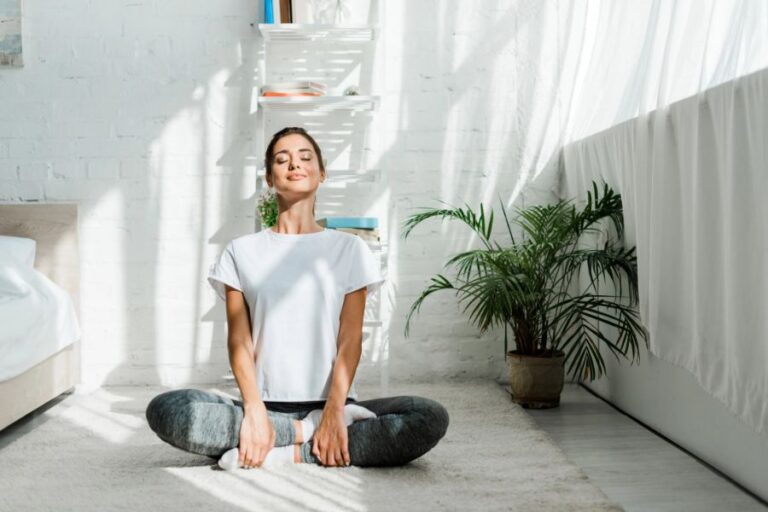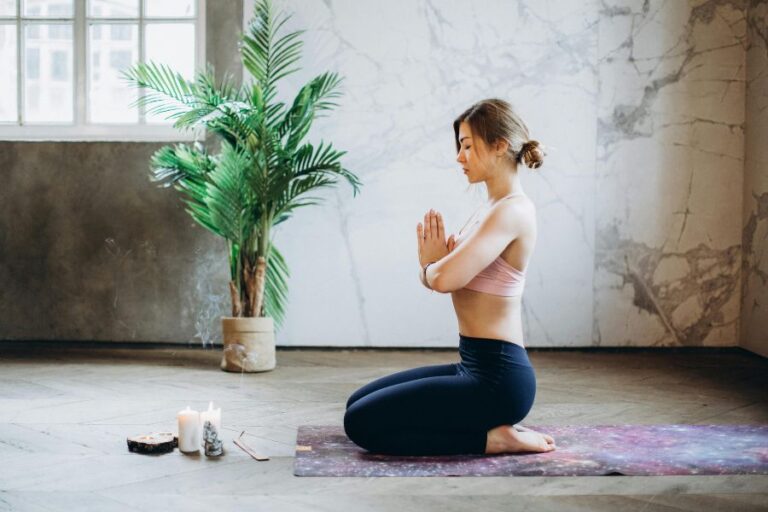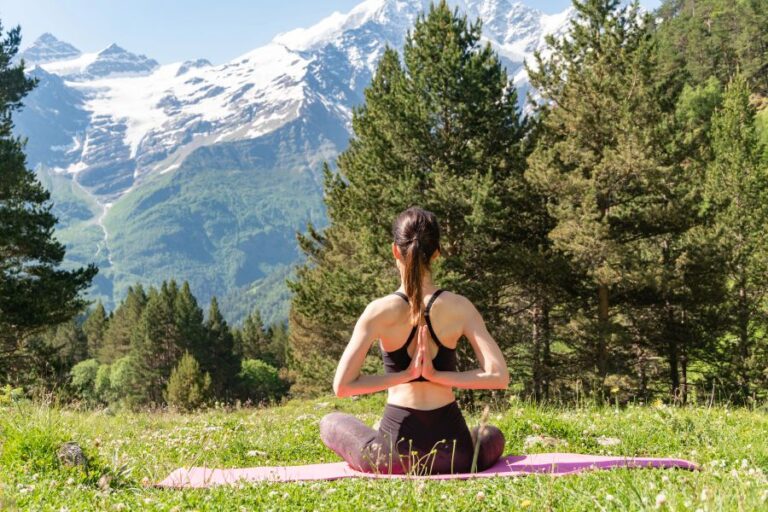We may earn money or products from the companies mentioned in this post.
Mindful movement and activity are excellent ways to regulate your emotions, helping you maintain a sense of inner peace even during challenging times. Science has shown that physical activity, such as a simple walk, can boost endorphins and transform negative thoughts and emotions into positive ones. Among the various forms of mindful movement, yoga is a favorite activity here at A Mindful Haven. Yoga’s holistic approach of integrating breath control, meditation, and physical postures promotes balance in both the body and mind. In this post, we will explore how you can use yoga for emotional balance, highlighting seven simple poses that you can incorporate into your daily routine to manage stress and cultivate a sense of calm.

Yoga for Emotional Balance
Yoga is an exercise rooted in mindfulness, which connects the mind and body through deep concentration. This connection allows you to understand your emotions and even change them. Almost like hacking your mind, a yoga session can change your anxious body into a calm one with a few deep breathes.
How Yoga Helps Regulate Emotions
In an article by Psychiatrist Vanika Chalwa that was published at Stanford Lifestyle Medicine, you can learn about the “Neuroscience of Yoga.” Dr. Chalwa explains that regular yoga practice can actually affect our amygdala, the emotion processor of our brains, to allow us to control how we respond to stress. This means that practicing yoga can help lower the harmful effects of stress and increase our resilience and adaptability.
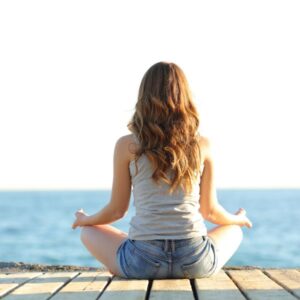
How to Start Yoga for Emotional Balance
Using yoga for emotional balance instead of the typical fitness benefits can seem daunting, but with a few simple steps, you can seamlessly integrate it into your daily routine. It is that easy. By following these five foundational steps, you’ll be well on your way to experiencing the profound benefits that yoga has to offer.
Yoga for Emotional Balance: 7 Simple Poses
Below are 7 simple poses to help you start using yoga for emotional balance.
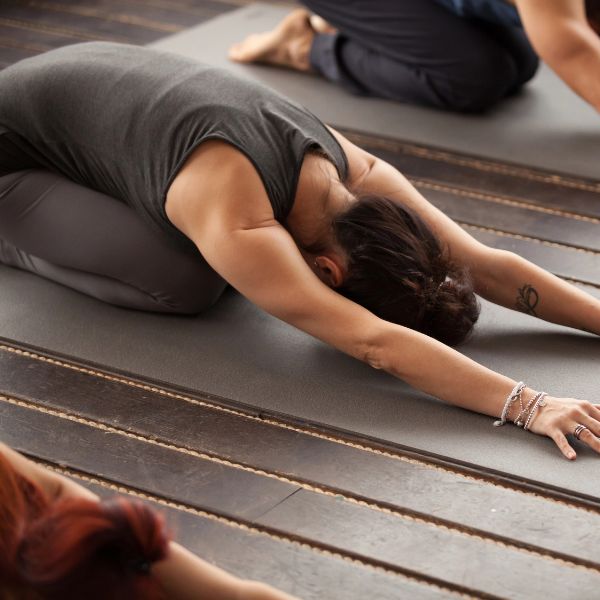
Child’s Pose (Balasana)
Begin in Child’s Pose to gently stretch the back and shoulders. Start on your hands and knees, then sit back on your heels while reaching your arms forward on the mat. Rest your forehead on the ground. Imagine your spinal column separating in the stretch as you relax.
This pose encourages introspection while calming the mind.
Cat-Cow Pose (Marjaryasana-Bitilasana)
Move back onto your hands and knees. We will warm up the body with a dynamic movement. To create a mindful flow, you need to synchronize your breathing with each movement. As you slowly curl your body inward and arch your back into Cat, take a deep breath in. Then slowly breathe outwards as you release your spine into cow pose. This synchronization will increase your body awareness.

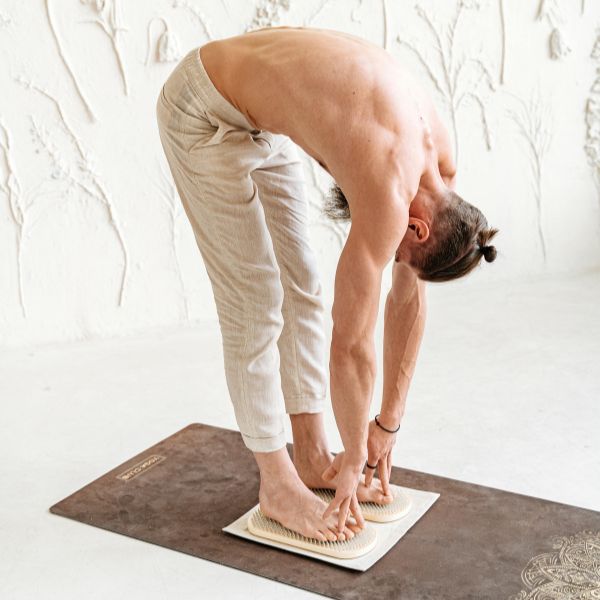
Standing Forward Bend (Uttanasana)
Stand up and step forward to the top of your mat. Gently bend at the waist and let the weight of your head hang heavy, releasing tension in the neck and shoulders. As you breathe through this pose, collect your thoughts and begin to release your negative energy. As the tension flows out of your body, send your accumulated stress too.
This pose stretches the hamstrings, calves, and back, promoting relaxation and reducing stress. It also helps calm the mind and soothe the nervous system.
Legs Up the Wall (Viparita Karani)
Let’s move over to the wall for the Legs on the Wall Pose. This pose is exactly what it sounds like. Lie on your back and extend your legs up against a wall, making an L shape with your body. Then, relax your arms by your sides.
While you rest your body, this pose will help improve circulation throughout the body which helps relieve body aches and reduce anxiety.

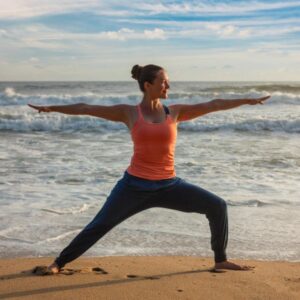
Warrior II (Virabhadrasana II)
Slightly different from Warrior I, Warrior II rotates the hips so they are facing outward. Stand with your feet wide, turn one foot out, and bend the corresponding knee. Extend your arms out to the sides at shoulder height.
Warrior II strengthens the legs and core, enhances stamina, and fosters focus and determination, making it empowering for emotional resilience.
Reclining Bound Angle Pose (Supta Baddha Konasana)
Return to the floor again. Lie on your back, bring the soles of your feet together, and let your knees fall open. Optionally, support your knees with cushions.
This pose opens the hips and chest, encourages deep relaxation, and calms the mind, helping to alleviate anxiety and stress.
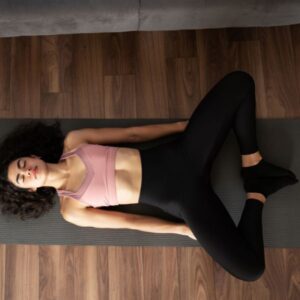
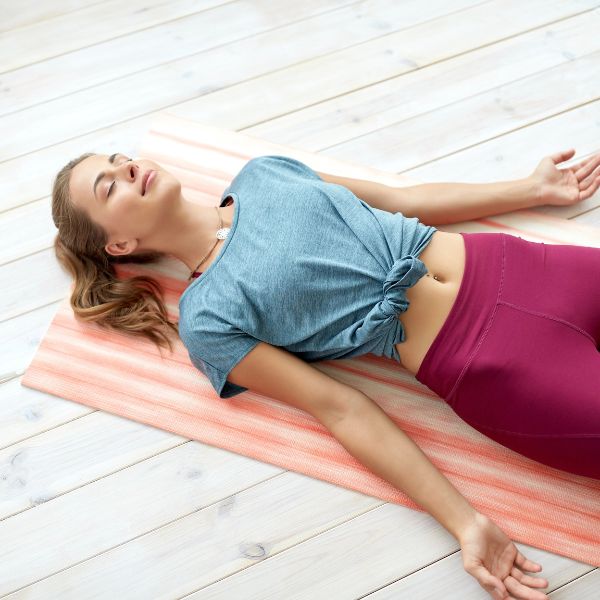
Corpse Pose (Savasana)
It’s time to end your sequence with Savasana, the ultimate pose of relaxation. Lay flat on your mat, with your arms and away from your body, and close your eyes and breathe evenly. With each breath allow all of the tension to leave your body.
Allow your body and mind to fully release control. Corpse Pose promotes complete relaxation and helps integrate the benefits of your practice, calming the nervous system and fostering emotional balance.
Enjoy this beginner-friendly yoga routine. You can easily start a consistent practice to hack your brain and gain more control over your emotions.
How to Add Yoga to Your Day
Consistency is key. Throughout this post, I have mentioned that it takes regular practice to get the full benefits of yoga for emotional balance. But how do you add yoga to an already busy schedule? It is not as tricky as you think, it’s about finding ways to seamlessly include it into your everyday life. Here are a few tips to help you make yoga a regular part of your day:
- Start Small: Begin with short sessions, perhaps 10-15 minutes in the morning or evening. Gradually increase the length of your practice as it becomes a habit.
- Designate a Specific Time: Choose a time that works best for you – whether it’s first thing in the morning to energize yourself, during a midday break, or before bedtime to unwind.
- Create a Routine: Combine your yoga practice with other daily habits. For example, you can stretch during a break from work or after a walk.
- Stay Flexible (Literally and Figuratively): Be open to adjusting your practice based on your day’s needs. It’s okay to have shorter or less intense sessions when busy.
- Incorporate Mindfulness: Even on the busiest days, take a few minutes to practice pranayama (breathing exercises) or a short meditation to maintain the connection to your practice.
Remember, you are starting a new habit and it will take time before it fits perfectly into your life. But with a little flexibility and determination, you will find many ways to practice yoga. then it is only a matter of time before you start reaping the benefits.
Start Hacking Your Brain with Yoga!
Yoga is a transformative practice that goes beyond physical exercise. One of its most profound benefits is its ability to positively impact your emotional well-being. The gentle poses and mindful breathing techniques highlighted in this yoga routine provide an excellent starting point for beginners looking to explore yoga for emotional balance.
Following this post’s sequence of poses such as Child’s Pose, Cat-Cow Pose, and Warrior II can help you develop a regular practice that promotes both physical flexibility and mental tranquility. Each pose has been thoughtfully chosen to support emotional healing, calm the mind, and foster a deeper connection with your body. Over time, consistent practice can help you manage stress, reduce anxiety, and cultivate a more balanced emotional state.
Remember, building a yoga practice takes time and patience. Be gentle with yourself as you start this journey and listen to your body’s needs. Whether you have just a few minutes each day or can dedicate more extended sessions, the key is consistency and mindfulness.
To ensure you have everything you need to embark on this fulfilling journey, visit our blog’s shop for essential yoga gear. From high-quality yoga mats to comfortable and supportive props, you’ll find several necessary items you need to create a serene and effective yoga space.
Embracing yoga for emotional balance is a powerful step towards a calmer, healthier, and more harmonious life. Start with this simple routine and gradually experience the transformative benefits of yoga, both emotionally and physically.


